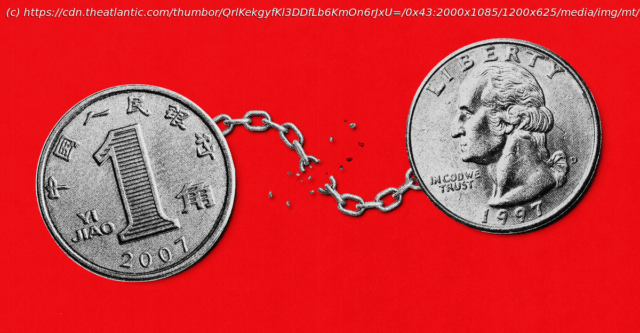As Beijing’s ambition of overtaking the American economy stalls, its strategy is shifting to economic coercion. The U.S. must be prepared.
The United States is in danger of missing a profound change in the economic component of China’s geopolitical strategy. Chinese President Xi Jinping has downgraded the Communist Party’s ambition to overtake the U.S. in economic size (though that is still officially a goal). Instead, his priority is to minimize China’s dependence on other countries and maximize its ability to coerce them economically. This is an implicit acknowledgment that China can’t achieve the aim of being a truly rich nation anytime soon. But the U.S. cannot afford to be complacent: China can wield its very large economy as a strategic weapon.
Just as the U.S. previously needed to respond to a China that was bent on becoming the world’s foremost economy, Washington now needs to respond to a China bent on long-term economic coercion to secure the interests of the Communist party and the Chinese nation. Domestic action by the U.S. is important, and is easier to achieve, starting with better understanding Xi’s goals. Internationally, to persuade friends and allies to limit their reliance on China, the U.S. must revive a moribund trade policy.
Xi clarified China’s new approach in a series of speeches in 2020, claiming that the “powerful gravitational field” of the state-controlled Chinese market can be used to reshape supply chains in Beijing’s favor. In Xi’s view, this is essential in what he’s called the “great struggle” against Western efforts to limit China’s technological advancement and target its import vulnerabilities.
China has, of course, long engaged in industrial espionage and coercive technology transfer. And Xi’s “Made in China 2025” industrial plan has, since 2015, provided sweeping government assistance to such sectors as semiconductors and electric vehicles. Xi now seems to believe that China must redouble efforts to tilt economic leverage in its favor, as Beijing responds to what it views as an evolving American strategy of containment. Xi may see the decoupling of the two countries’ economies as ultimately inevitable—and may now be actively advancing it, on his preferred terms.
At home, Xi evidently fears that a thriving private sector risks powerful constituencies developing outside party control—he has cracked down on activities perceived as threatening in this respect. With the party determined to retain control of the economy, potentially productive industries face many barriers to expansion. In their place are sectors that serve the party’s interests first. This is not conducive to innovation and scientific breakthrough and, along with deteriorating demographics and high debt, will continue to limit growth.
This hardly means that China has given up on competing with the U.S. and others, but it will do so through state-shaped technological development and, crucially, its preeminent position in global supply chains. China will be neither the world’s low-tech factory nor its leading tech pioneer, but will aim instead to make itself indispensable as a producer of high-value goods upon which even its adversaries depend.






